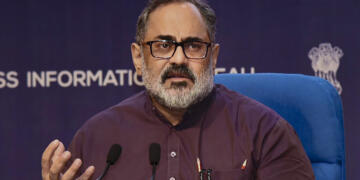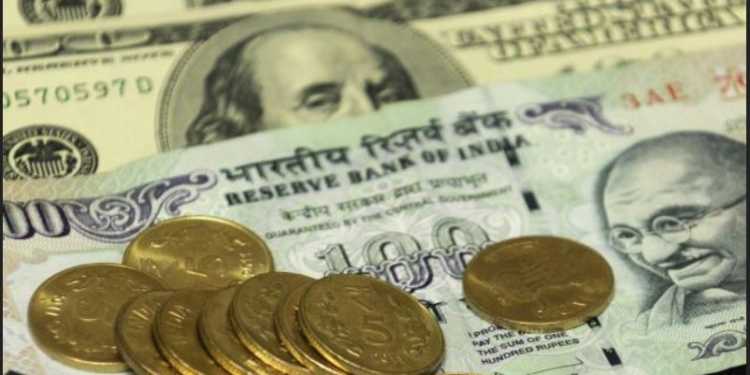In the economic history of India, year 2017 would stand out as a year of disruption. Apart from the disruptions, our stock markets had a dream run in 2017 by rising over 30%. If we ignore the temporary effects of demonetization and GST roll-out, we would probably have a great year in terms of GDP growth too. Not just India, almost every major economy in the world ended 2017 on a high note. It is a commonly reached consensus that Indian growth rate would pick up in 2018. As we have entered into 2018, let us try to assess the possible factors that could push our economy further and the factors that could potentially drag us down.
Few days back I had written an article about Insolvency and Bankruptcy Code (IBC), 2018 will be the year of testament to IBC to find out its efficacy. Even if it is able to deliver 50% of the expected results, malaise of non-performing assets in PSBs will be a thing of past. Not just IBC, it will be the year of GST. Wrinkles are mostly ironed out after GST’s roll out (albeit, a bit hurried), now the new taxation structure is all set to show its might.
GST’s prowess coupled with IBC’s delivery of results, could make 2018 a year to remember. Center for Economic Business Research (CEBR) has predicted that India is set to overtake UK and France to become fifth largest economy in the world by the end of 2018.
There might be a few other areas as well where 2018 will prove to be a landmark year for India, but, I would rather discuss the 2 threats that can potentially rain on our parade rather than the opportunities or strengths.
1. Fuel Prices:
First thing in my list would be fuel prices. In one way, NDA Government was lucky, it didn’t have to bear the brunt of high crude oil prices, thanks to which our current account deficit was well within the limits of concern. Although current account deficit doubled in percentage terms from 2016 to 2017, it is still within the permissible levels.
But, 2018 is not going to be as rosy as it was in the previous years when it comes to fuel prices. Brent Crude, which touched it’s lowest value of $35 pre barrel in Jan 2016, is already marching towards $70 per barrel. Most experts predict fuel prices will further rise, albeit slightly. But, no one is expecting crude oil prices to come down in 2018 and it is not a good news to us. If, fortunately, US shale oil producers produce enough and more developed companies rapidly move towards electric vehicle, rising fuel prices won’t affect us much. But, it is very unlikely that there will be a rapid shift towards electric vehicles within an year period.
Fuel prices is a global phenomena and we can exert no control over it. In conjunction to fuel prices, we have our very own threat in the form of inflation. Rising fuel prices might be an uncertainty, but inflation is already creeping in to the economy.
In November, retail inflation surged to a 15 month high of 4.9%. After few bouts of decreased interest rates, RBI has put a pause on easing its monetary policy, fearing inflation. Although increase of interest rates is not on cards, at least for now, possibility can’t be ruled out if inflation keeps rising. If fuel prices rises further, it will act as a catalyst for rising inflation. We will be back in 2012, all over again.
2. Rural Distress:
To fight the slowdown in the economy due to the GST roll-out, government had to spend more in the bygone quarters of FY 2017-18. Fiscal deficit has already reached 112% of annual target, and government is also planning to raise another Rs. 50,000 crore through long-term bonds. While the inflation and fuel prices are visible problems, we have another very serious issue to deal with in 2018, that is, rural distress. No matter how much we have pushed the manufacturing in the last few years, ours is still an agrarian economy. More than 50% of Indian population is dependent on agricultural activities. Distress in agriculture used to be a region specific issue due to delayed monsoons or lower than average rainfalls. But, of late, Rural distress has become a pan India problem.From Madhya Pradesh to Tamil Nadu to Punjab, we are witnessing farmer protests everywhere. Fortunately, finance minister has acknowledged the problem and he assured that the focus of next budget will be rural economy and infrastructure. Hopefully, there will be plenty rains and good yields on crops too.
As 2018 is the year before elections, Government is going to present a populist budget rather than a reform oriented one. Populist budgets are generally not appreciated by the corporates. As the government spending increases, private investments will be sidelined, and no business entity likes that. On the other hand, if the rural push helps to develop sustainable rural economy, things will be much better than what they could possibly be with a reform oriented budget.
Apart from the fuel prices, all the factors we have discussed are domestic in nature. Few international factors such as market crashes, wars, Brexit proceeds, US stance against visa allocation etc will certainly have their share in pulling down the economy. The purpose of the article is not to scare you about economic slowdown, rather to introduce the potential risks our economy might face.






























